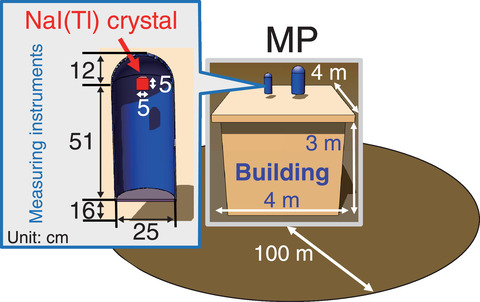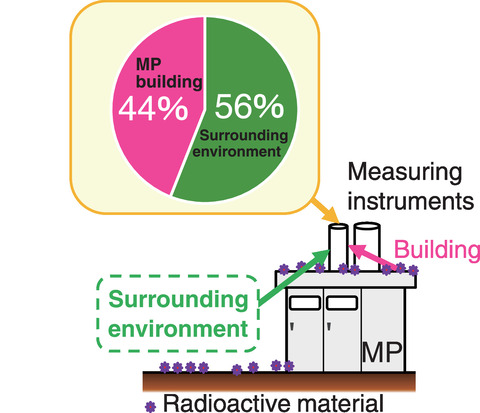
Fig.2-7 Geometry simulated by the particle and heavy ion transport code system (PHITS)

Fig.2-8 Influence of MP contamination on the measured dose
If a nuclear accident occurred and radioactive material was released, protective measures, such as evacuations, will be taken for inhabitants based on the ambient dose rate of the surrounding environment, which is measured using measuring instruments on monitoring posts (MPs). However, if an MP was as contaminated as the surrounding environment, the measured dose rate may be higher than that of the surrounding environment owing to the contamination near the instruments. Inaccurately high readings may lead to excessively protective measures, such as an unnecessary evacuation with many evacuees, leading to a difficult situation for decision makers. To avoid such a situation, the influences of MP contamination on the measured dose rate were estimated.
The Particle and Heavy Ion Transport code System (PHITS) was used to estimate the influence. Under the assumption that the building and ground surface of the MP are contaminated, a simple simulation geometry was first modeled, as shown in Fig.2-7. The contamination of the surface of measuring instruments was assumed negligible owing to their small surface area and material (reinforced plastic), which is less likely to be contaminated. A full-size MP comprising a concrete building and measuring instruments was modeled. The measuring instrument has a NaI(Tl) scintillation detector; radiation is detected by the cylindrical crystal of the detector. The ground surface was assumed to be soil with a radius of 100 m considering the mean free path of γ-rays in air. In the PHITS calculation, the surface of the building and ground of the MP was assumed to be uniformly contaminated with the same surface density. Using the PHITS, the amount of γ-ray radiation generated by 134Cs, 137Cs, and 131I and the associated radiation energy detected by the NaI(Tl) crystal and the dose rate were estimated given the radionuclide ratios from the accident at TEPCO's Fukushima Daiichi NPS. The influence of radiation from the ground surface was classified as influence from the surrounding environment, and radiation influence from the MP roof was classified as influence from the MP building.
The simulation results under these conditions demonstrated that 44% of the measured radiation was caused by contamination of the MP; only 56% was from the surrounding environment (Fig.2-8), thus suggesting that the dose rate measured by MPs can be an overestimation. However, the simple MP geometry assumed in this simulation may have caused the overestimation, i.e., accounting for the actual, more-complex geometry and instrument contamination would decrease the contamination ratio of the MP and reduce the overestimation.
Future work will therefore include clarifying the estimation of the dose rate, which can then be use to calibrate MPs and update future nuclear accident response procedures.
This study was conducted using the supercomputer SGI ICE X at the JAEA.
(Hirokazu Hiraoka)